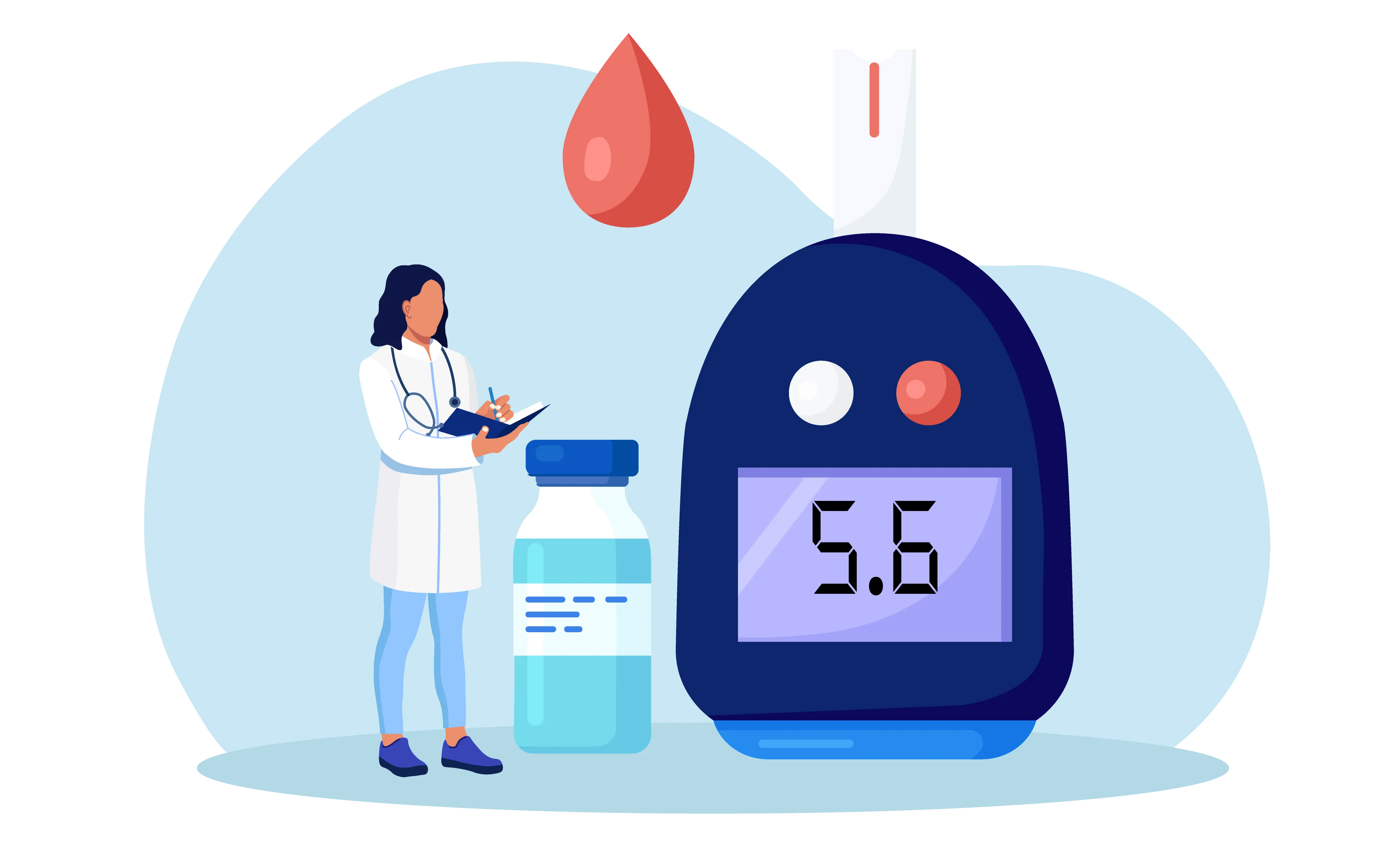General Health | 5 min read
Sugar Test: Important Things to Know About Blood Test for Diabetes
Medically reviewed by
Table of Content
Key Takeaways
- People with diabetes have to take a sugar test periodically
- Normal fasting blood sugar should be less than 100 mg/dL
- You can measure sugar levels using a sugar test machine at home
Diabetes is so prevalent around the world that it can be called an epidemic. Recently, India has experienced a surge in cases of diabetes and prediabetes. Obesity, unhealthy diet and lifestyle habits, and genetics are some of its risk factors. Remember, diabetes symptoms can occur suddenly without any warning. Today, this disease is no longer limited to those who are middle-aged or older. With the busy lifestyle of the 21st century, the young generation is at a higher risk of diabetes.
To keep your blood sugar in check, it’s better that you get yourself tested regularly. A glucose test indicates the level of sugar and glucose in your blood. An abnormal level of blood sugar is associated with type-1 diabetes, type-2 diabetes, or prediabetes. If you already have diabetes, you can track and maintain normal blood sugar levels with this test.
You can take a sugar test using a portable blood glucose meter at home or a sugar test machine at a doctor’s office. Read on to know more about the important things about sugar test, its results, and possible side effects.
Additional Read: A Guide to 4 Kinds of Diabetes and Other Types of Blood Sugar Tests
Why take a blood sugar test?
A blood sugar test reveals the amount of sugar in your blood. Doctors use a glucose test to diagnose different types of diabetes. If you have any of them, you need to monitor your sugar levels constantly. This helps doctors know the effectiveness of the treatment.
You can use glucose tests to know the following.
- Status of your blood sugar levels
- Effectiveness of your current treatment plan
- Efficacy of your diet and lifestyle
- Your overall health if you are not diabetic
Your body converts carbs from foods into glucose. Glucose is the primary source of energy for the body. But, high or low levels of blood glucose can prove detrimental to your health.
- High blood sugar or hyperglycemia can cause ketoacidosis, a fatal condition for type 1 diabetes patients. In this diabetic disorder, the body relies only on fat for energy. Hyperglycemia can cause further damage to the eyes, kidneys, and heart.
- Low blood sugar or hypoglycemia, if left untreated, can cause coma or seizures.
Uncontrolled blood sugar can be life-threatening. So, you must monitor and manage your blood sugar levels.

What are the types of glucose tests?
There are different types of glucose tests. Depending on the purpose, doctors will recommend the right one to you.
- Glycated hemoglobin (A1C) test: This test shows the amount of sugar attached to your hemoglobin. It is measured in percentage, and you do not have to fast for this test. A1C test is done to know your average sugar level for the past 2 to 3 months. The higher the sugar level, the higher the percentage of sugar attached to hemoglobin. An A1C level ranging from 5.7% and 6.4% indicates prediabetes. A1C level above 6.5% means you have diabetes. Anything below 5.7% is healthy.
- Fasting blood sugar test: Here, you have to fast overnight before the test. Normal fasting blood sugar level is below 100 mg/dL. Anything between 100 mg/dL and 125 mg/dL is prediabetes. If your fasting blood sugar is 125 mg/dL or more, it means you have diabetes.
- Random blood sugar test: This test can be done any time to check your immediate blood sugar. A sugar level of 200 mg/dL or more points to diabetes.
- Oral glucose tolerance test: Multiple blood tests are conducted in this case. The first sample is collected after you fast overnight. Then, you have to drink a sugary liquid, after which your sugar level is measured periodically.
Read the table below to know what the results mean.
| Results | Range (mg/dL) |
| Diabetes | >200 |
| Prediabetes | 140-199 |
| Normal | <140 |
How to decipher a sugar test result?
Normal blood sugar range varies as per the time of the test and your personal medical history. So, only your doctor can tell you if you are healthy or at risk.
The table below shows the general sugar level range for people with and without diabetes.
| Time | People with diabetes (mg/dL) | People without diabetes (mg/dL) |
| Normal fasting blood sugar | 80-130 | <100 |
| Before meals | 70-130 mg | <110 |
| Normal blood sugar after eating (after 2 hours) | <180 | <140 |
| At bedtime | <120 | <120 |
What are the possible side effects of taking a glucose test?
There are no severe or unhealthy side effects of a glucose test. You may just feel a little soreness at the site from where blood is drawn. However, it wears off within a day.
Diabetes is a slow killer with no cure, exposing you to numerous health problems. Your doctor will prescribe a treatment plan to manage or prevent diabetes, depending on your sugar test results. Young or old, you should take proactive steps to check and maintain your blood sugar levels. Book a sugar test on Bajaj Finserv Health in no time. Opt for online doctor appointment and prioritize your health, or you can also buy diabetes health insurance online with Bajaj Finserv Health.
References
- https://pubmed.ncbi.nlm.nih.gov/11742409/
- https://pubmed.ncbi.nlm.nih.gov/33727086/
- https://www.frontiersin.org/articles/10.3389/fendo.2020.507064/full
Disclaimer
Please note that this article is solely meant for informational purposes and Bajaj Finserv Health Limited (“BFHL”) does not shoulder any responsibility of the views/advice/information expressed/given by the writer/reviewer/originator. This article should not be considered as a substitute for any medical advice, diagnosis or treatment. Always consult with your trusted physician/qualified healthcare professional to evaluate your medical condition. The above article has been reviewed by a qualified doctor and BFHL is not responsible for any damages for any information or services provided by any third party.





